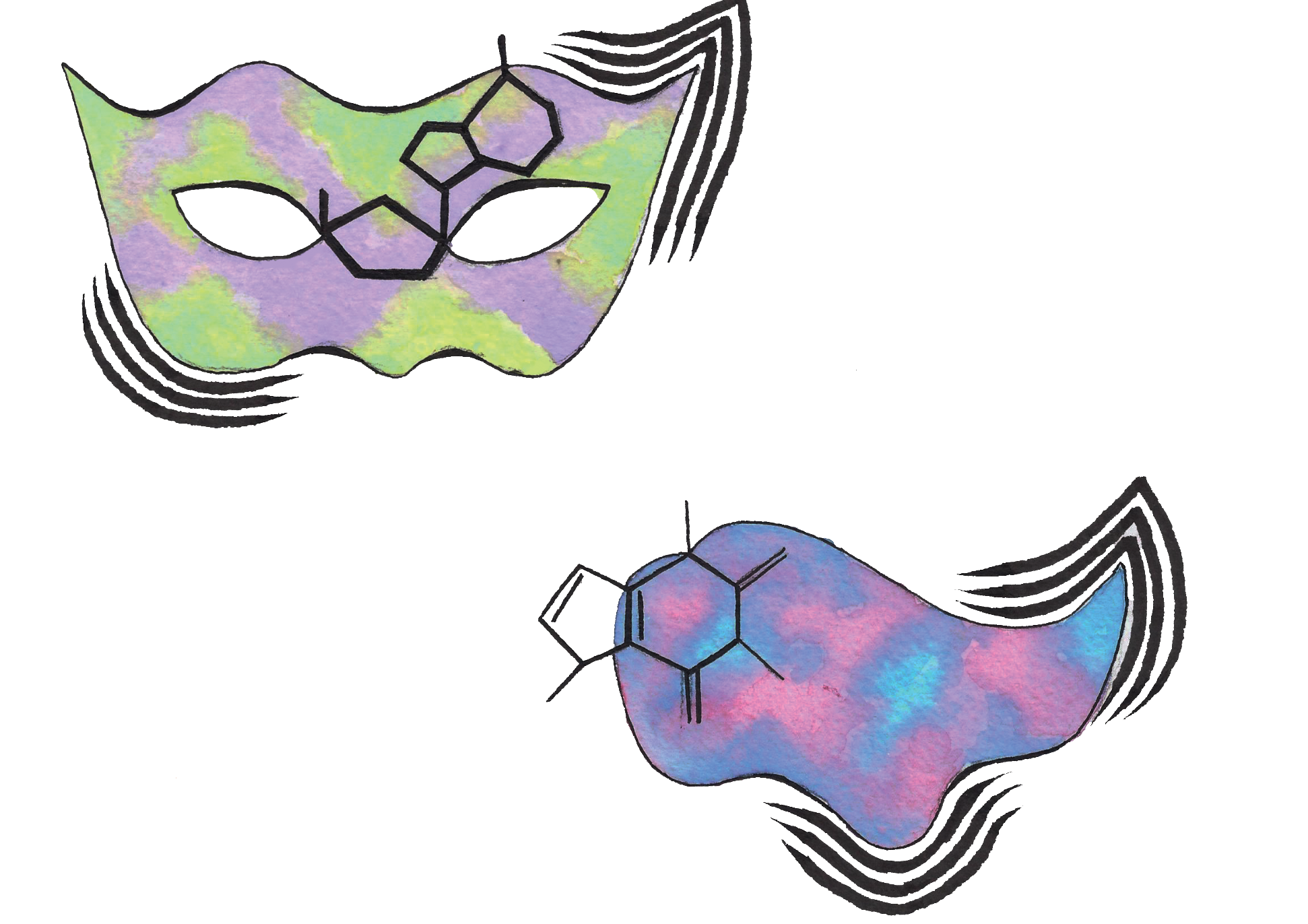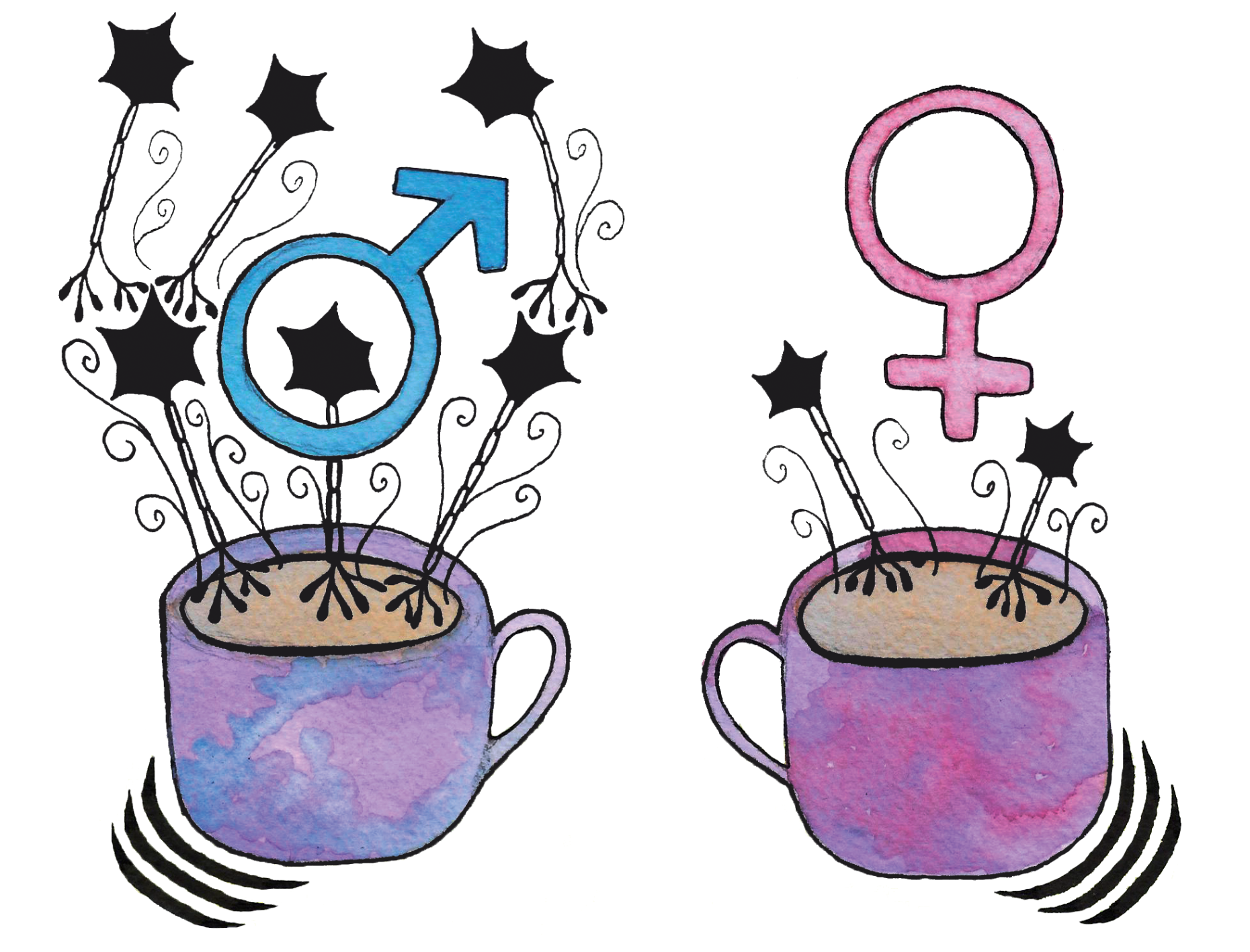The adage “an apple a day keeps the doctor away” has possibly become a reality in the form of the most popularly consumed psychoactive drug, caffeine, in relation to Parkinson’s. With nearly 90% of Americans starting their day with a dose of caffeine, new research suggests caffeine can also reduce the risk of developing Parkinson’s disease (PD), a progressive disease that affects nearly ten million people worldwide [1]. With no definitive treatments, preventative measures may currently be the best method for fighting PD, as caffeine can prevent the loss of important dopamine receptors [8]. Although it is not curative, caffeine has neuroprotective effects that can lower the relative risk of developing Parkinson’s.
Neuroprotective Effects of Caffeine Against PD
The cardinal features of PD include tremors, slowed movement, and increased muscle rigidity that worsen over time. Symptoms start occurring when dopamine-producing neurons in the basal ganglia and cerebellum, regions that control movement, begin to break down [2]. Dopamine is responsible for relaying messages that control and coordinate movement to the rest of the body, meaning Parkinson’s patients experience tremors and shaky movement [3]. Caffeine has been shown to prevent the demise of dopamine, leading to the hypothesis that caffeine could be used for its neuroprotective abilities to decrease the risk of developing Parkinson’s [5].

Caffeine inhibits binding between adenosine, a neuromodulator that regulates various bodily functions, and specific receptors called adenosine A2A receptors, which are both located in the striatum region of the brain. Adenosine decreases dopamine’s ability to bind to its receptors [5, 6]. Currently, there is no clear explanation as to why we observe this phenomenon, but when dopamine is prevented from doing its job, individuals begin to experience symptoms of decreased mobility and onset of PD.
Antagonists of A2A receptors, like caffeine, are thought to have neuroprotective abilities by protecting the dopamine neurons [7]. Mouse studies have correlated the antagonist abilities of caffeine with higher levels of dopamine in each subject. In one such study, researchers in the Department of Neurology at Massachusetts General Hospital injected MPTP, a compound known to cause Parkinsonism, into groups of mice pretreated with caffeine or saline to compare the effects. They discovered that the mice dosed with caffeine had 40% more dopamine neurons than the mice pretreated with saline [8]. Since these dopamine receptors were protected from the toxicity, the researchers correlated a lower risk for developing PD with the pretreatment of caffeine. Because adenosine cannot bind to A2A receptors, dopamine gains the ability to bind to its receptors, enabling it to carry out its responsibilities in motor activity. It is currently not known how caffeine protects against toxicity, but it has been an effective compound in mitigating the decline of dopamine receptors, which poses the question of whether it could be used as a preventive measure for Parkinson’s. Caffeine is part of a class of these A2A receptor antagonists that are being explored to create possible PD treatments. Since these A2A antagonists have been shown to prevent receptors from degenerating, researchers are studying how their protective effects can be used to supplement existing treatments like levodopa, a dopamine replacement drug that can alleviate some of the common symptoms of PD [7].

The Association between Caffeine and Reduced Risk for PD
The National Institute of Health AARP Diet and Health Study examined the relationship between caffeine intake and PD development [9]. The study followed over 300,000 participants, both men and women, for nearly a decade. To collect data, they issued a food-frequency questionnaire every two to four years that detailed the type of caffeinated drinks, such as coffee, tea, or cola, consumed on a daily basis. At the end of the study, it was concluded that men and women had a decreased risk of developing Parkinson’s when their consumption of caffeine increased.
Harvard Medical School also conducted a survey, where researchers studied a group of 47,351 men and 88,565 women who had no signs of Parkinson’s and tested to see how different foods would affect their relative risk. They calculated “relative” risk by dividing the incidence rate of PD among each quintile of caffeine intake among each gender [10]. Following similar procedures as the NIH, they followed the men for 9 years and the women for 16 years. After adjusting for age and smoking risks, the study found interesting gender-specific patterns. Among men, increased amounts of caffeine consumption correlated to lower risk for PD. Men who drank one to three cups of coffee per day had a 40% lower risk of developing PD than men who did not drink coffee. To address the possibility of other compounds in coffee causing the results, the group also explored non-coffee sources of caffeine like tea and other caffeinated beverages. Similar results of an inverse relationship, with 20% lower risk, were found in individuals who consumed a cup of any caffeinated beverage daily. This finding suggests that caffeine, not just coffee, can help lower the risk of developing Parkinson’s. Among women, however, the study showed a U-shape correlation where the risk was highest when minimal or extreme amounts of caffeine were consumed, showing that an average consumption of caffeine resulted in a lower risk for Parkinson’s. A potential explanation for this difference may be related to postmenopausal estrogen usage, a type of therapy to replace the lost estrogen after women stop producing the hormone naturally. The researchers found that women not using hormone therapy had a lower risk of PD when their caffeine consumption increased, while the opposite held true among estrogen users. However, a contrasting study done by the American Medical Association showed estrogen therapy may be linked to a reduced risk of PD in women [11]. The role estrogen plays in PD is still a gray area, but differences among the effects of estrogen may be explained by how caffeine specifically interacts with the chemical structure of estrogen. Therefore, there is no conclusive evidence on whether or not increased caffeine consumption can lower the risk in women. More research is needed to explain why caffeine affects the sexes the way it does.

The Golden Dosage
With all the research surrounding caffeine and Parkinson’s, one would think scientists have found a “perfect” amount of caffeine consumption, but unfortunately, they have not. It would be difficult to quantify a specific amount of caffeine for everyone, as the body composition of each individual is different and responds differently. Reviewing the Harvard study, consuming over six cups of black coffee would significantly reduce the relative risk by 80% for males [10]. Although the risk of PD is significantly reduced, drinking over six cups can cause problems like insomnia, hypertension, and liver damage, which may outweigh the benefits. Drinking anywhere from 200-400 mg of caffeine, equivalent to two to four cups of coffee, seems to be a moderate balance between reducing the risk of PD while indulging a healthy amount of caffeine, specifically among men [10].
Conclusion
Though the consumption of caffeine may reduce the risk of PD, it is important to note that it cannot treat the disorder by alleviating any motor symptoms and is not a guaranteed preventative measure [12]. Both the Harvard and NIH studies show a decrease in relative risk of PD for men, but the difference among women is a major limitation that requires a better understanding on how estrogen can play a role in the discrepancies between the sexes and how it correlates to the effects of caffeine. In spite of these factors, studying the relationship between Parkinson’s and caffeine is an area of research pioneering novel treatments for the disease. Current treatments for PD, like levodopa, focus on managing symptoms with dopaminergic therapies, but the class of A2A receptor antagonists offers exciting therapeutic and neuroprotective potential [13]. These antagonists are promising candidates that warrant more exploration to help us better understand why common compounds like caffeine can protect against neurotoxicity.
Citations
[1] Mitchell, D. C., Knight, C. A., Hockenberry, J., Teplansky, R., & Hartman, T. J. (2014). Beverage caffeine intakes in the U.S. Food and Chemical Toxicology,63 , 136-142. doi:10.1016/j.fct.2013.10.042
[2] Parkinson’s Disease. (2018, June 30). Retrieved from https://www.mayoclinic.org/diseases-conditions/parkinsons-disease/symptoms-causes/syc-20376055
[3] Panigrahi, B., Martin, K., Li, Y., Graves, A., Vollmer, A., Olson, L., . . . Dudman, J. (2015). Dopamine Is Required for the Neural Representation and Control of Movement Vigor. Cell,162 (6), 1418-1430. doi:10.1016/j.cell.2015.08.014
[4]Jacobson, K. A., & Gao, Z. (2017). Adenosine [Abstract]. Reference Module in Neuroscience and Biobehavioral Psychology . doi:10.1016/b978-0-12-809324-5.01791-0
[5] Cieślak, M., Komoszyński, M., & Wojtczak, A. (2008). Adenosine A2A receptors in Parkinson’s disease treatment. Purinergic Signalling,4 (4), 305-312. doi:10.1007/s11302-008-9100-8
[6] Nazario, L. R., Silva, R. S., & Bonan, C. D. (2017). Targeting Adenosine Signaling in Parkinsons Disease: From Pharmacological to Non-pharmacological Approaches. Frontiers in Neuroscience,11 . doi:10.3389/fnins.2017.00658
[7] Schwarzschild, M. A., Chen, J., & Ascherio, A. (2002). Caffeinated clues and the promise of adenosine A2Aantagonists in PD. Neurology,58 (8), 1154-1160. doi:10.1212/wnl.58.8.1154
[8] Chen, J., Xu, K., & Petzer, J. (2001). Neuroprotection by Caffeine and A2A Adenosine Receptor Inactivation in a Model of Parkinson’s Disease. The Journal of Neuroscience,21 .
[9] Liu, R., Guo, X., Park, Y., Huang, X., Sinha, R., Freedman, N. D., . . . Chen, H. (2012). Caffeine Intake, Smoking, and Risk of Parkinson Disease in Men and Women. American Journal of Epidemiology,175 (11), 1200-1207. doi:10.1093/aje/kwr451
[10] Ascherio, A., Zhang, S. M., Hernán, M. A., Kawachi, I., Colditz, G. A., Speizer, F. E., & Willett, W. C. (2001). Prospective study of caffeine consumption and risk of Parkinsons disease in men and women. Annals of Neurology,50 (1), 56-63. doi:10.1002/ana.1052
[11] Currie, L. J., Harrison, M. B., Trugman, J. M., Bennett, J. P., & Wooten, G. F. (2004). Postmenopausal Estrogen Use Affects Risk for Parkinson Disease. Archives of Neurology,61 (6), 886. doi:10.1001/archneur.61.6.886
[12] Postuma, R. B., Anang, J., Pelletier, A., Joseph, L., Moscovich, M., Grimes, D., . . . Lang, A. E. (2017). Caffeine as symptomatic treatment for Parkinson disease (Café-PD). Neurology,89 (17), 1795-1803. doi:10.1212/wnl.0000000000004568
[13] Pinna, A. (2014). Adenosine A2A Receptor Antagonists in Parkinson’s Disease: Progress in Clinical Trials from the Newly Approved Istradefylline to Drugs in Early Development and Those Already Discontinued. CNS Drugs,28 (5), 455-474. doi:10.1007/s40263-014-0161-7
